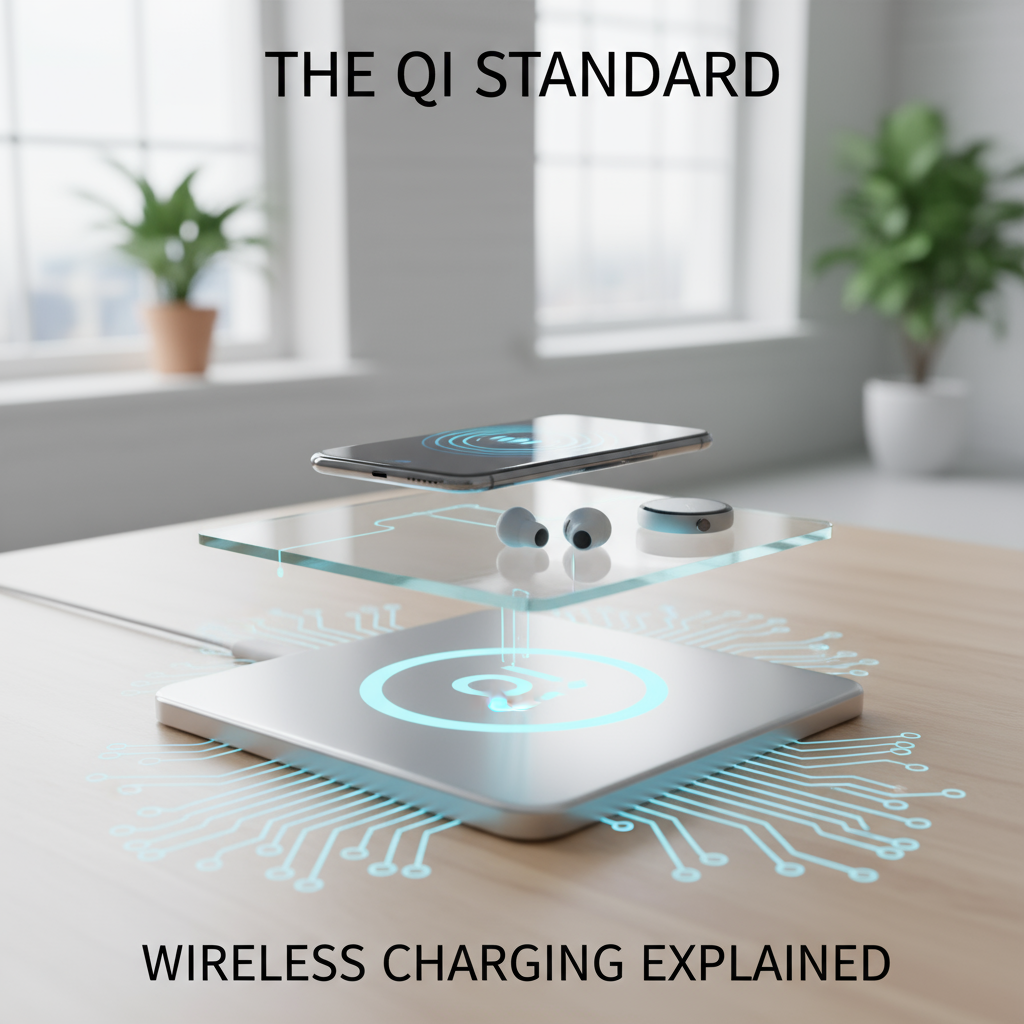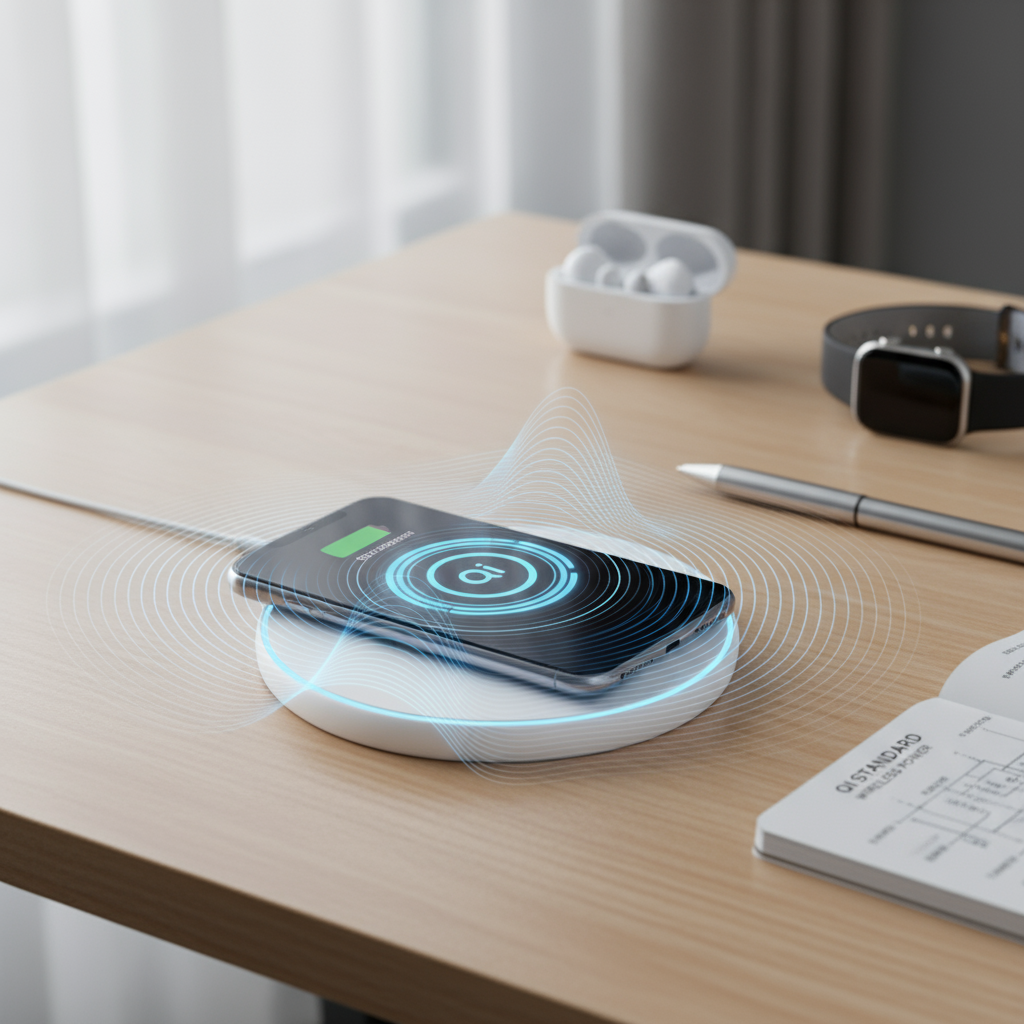For product managers, hardware engineers, and curious phone owners who want Qi wireless charging to “just work,” here’s the real talk. You’re juggling compatibility questions, confusing acronyms, heat issues, slow charge complaints, and that nagging fear of choosing the wrong charger or integrating the wrong module. QI Standard helps teams and brands cut through the noise—delivering reference designs, furniture and automotive integrations, efficiency and thermal tuning, interoperability and certification guidance, custom transmitter/receiver modules, plus performance testing—so your Qi solution charges fast, runs cool, and passes compliance without drama.
What is Qi Standard for wireless charging?
Qi (pronounced “chee”) is the global wireless charging standard defined by the Wireless Power Consortium that ensures your Qi-certified phone and a Qi-certified charger can charge safely and reliably at defined power levels (typically 5W–15W), no guesswork.
What does Qi standard mean?
It means cross-brand compatibility, agreed safety limits, coil alignment rules, power negotiation, and authentication—so a certified Qi device and a certified Qi pad speak the same language and won’t cut corners that risk heat or battery wear.
How does wireless charging work?
Short version: magnetic induction. A coil in the charger creates a changing magnetic field; a coil in your phone picks it up and turns it into power. That’s how wireless chargers work—and yes, that’s also how an induction charger works (you’ll hear “inductive charger” and “contactless charger” used too). The two devices handshake first, set power, then ramp up while managing heat and efficiency. With Qi2, magnets help align the coils—snaps into place, better coupling, fewer misfires.
What is a Qi standard device?
Any device that’s been tested and certified to the Qi spec. Think smartphones, earbuds cases, some accessories, and increasingly laptops and in-car surfaces. Watches can be tricky—some are Qi-like but proprietary—so always check certification.

Is my phone Qi standard?
Likely if it’s a flagship from the last 3–4 years. Quick checks: look for the Qi logo, “Qi wireless charging” in specs, or turn on “Wireless charging” in settings (Android). iPhones from 8 onward support Qi; iPhone 12 and newer support magnetic alignment (Qi2-compatible behavior). Cases with metal plates can block it.
Step-by-step: set up Qi wireless charging the right way
-
Confirm compatibility. Check your phone’s specs for “Qi wireless” or “Qi2.” No spec page? Search “YourModel + Qi.” If it’s not listed, a stick-on receiver won’t match native performance.

-
Choose a certified charger. Look for “Qi Certified” or “Qi2 Certified” on packaging or the WPC database. Why? Certified pads follow power limits and foreign-object detection—safer and more consistent.
-
Match the power adapter. Use a USB-C PD or QC brick that can supply at least 20W to unlock 15W Qi/EPP speeds (charger boxes often skip this fine print). Undersized bricks = sluggish charging.
-
Mind the case. Thick cases (over 3 mm), metal rings, or magnetic plates can kill coupling. If alignment feels fussy, pop the case off and compare. Now you know the culprit.
-
Align the coils. Place the phone centered on the pad; with Qi2 magnets, let it snap into place. No magnet? Move slowly until charging starts—tiny shifts matter, like finding radio signal in a hallway.
-
Watch the heat. Warm is normal; hot isn’t. If it gets toasty, reduce background apps, remove the case, or switch to a ventilated stand. Heat hurts efficiency and battery longevity—no prize for fastest-hotter charging.
-
Optimize for your routine. Nightstand? Use a stand to keep notifications visible. Desk? Flat pad so you can grab-and-go. Car? Consider an approved in-vehicle mount—QI Standard helps automotive teams dial in cabin power systems that don’t buzz or overheat.
-
Troubleshoot quickly. No charge? Check cable/brick, re-seat the phone, remove foreign objects (coins love hiding under phones), and verify Qi certification. Still flaky? Update firmware if your charger app offers it.
-
Scale to products. Building furniture with embedded charging or a custom accessory? QI Standard can handle reference designs, custom TX/RX modules, efficiency and thermal optimization, interoperability and certification guidance, and performance testing so your launch doesn’t stall in compliance.
What is Qi standard for wireless charging vs Qi2?
Qi covers inductive power up to 15W with profiles like BPP/EPP. Qi2 adds a Magnetic Power Profile—think precise alignment, steadier speeds, and fewer misplacements—similar feel to snap-on magnetic charging, but cross-vendor.
FAQ quick hits
What is a Qi standard device used with?
A certified Qi pad, stand, or in-car mount—mixing certified gear keeps charging predictable.
How does an inductive charger work differently from cables?
No pins or ports—power jumps via magnetic fields. Cables still win at peak speed, but Qi wins on convenience and durability.
Does Qi wireless hurt battery health?
Not if it’s certified and not cooking your phone. Good chargers manage power and temperature; that’s the whole point of the standard.
If this feels overwhelming, QI Standard can own the heavy lifting—from system design to lab validation—so your Qi wireless experience is clean, fast, and compliant on day one.